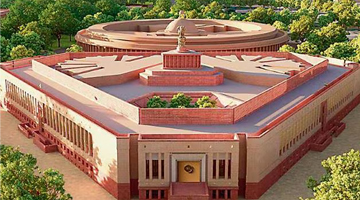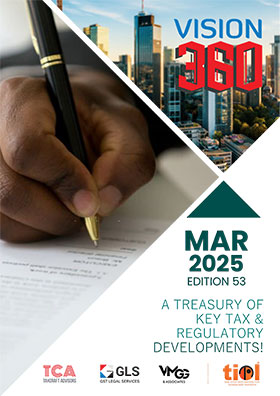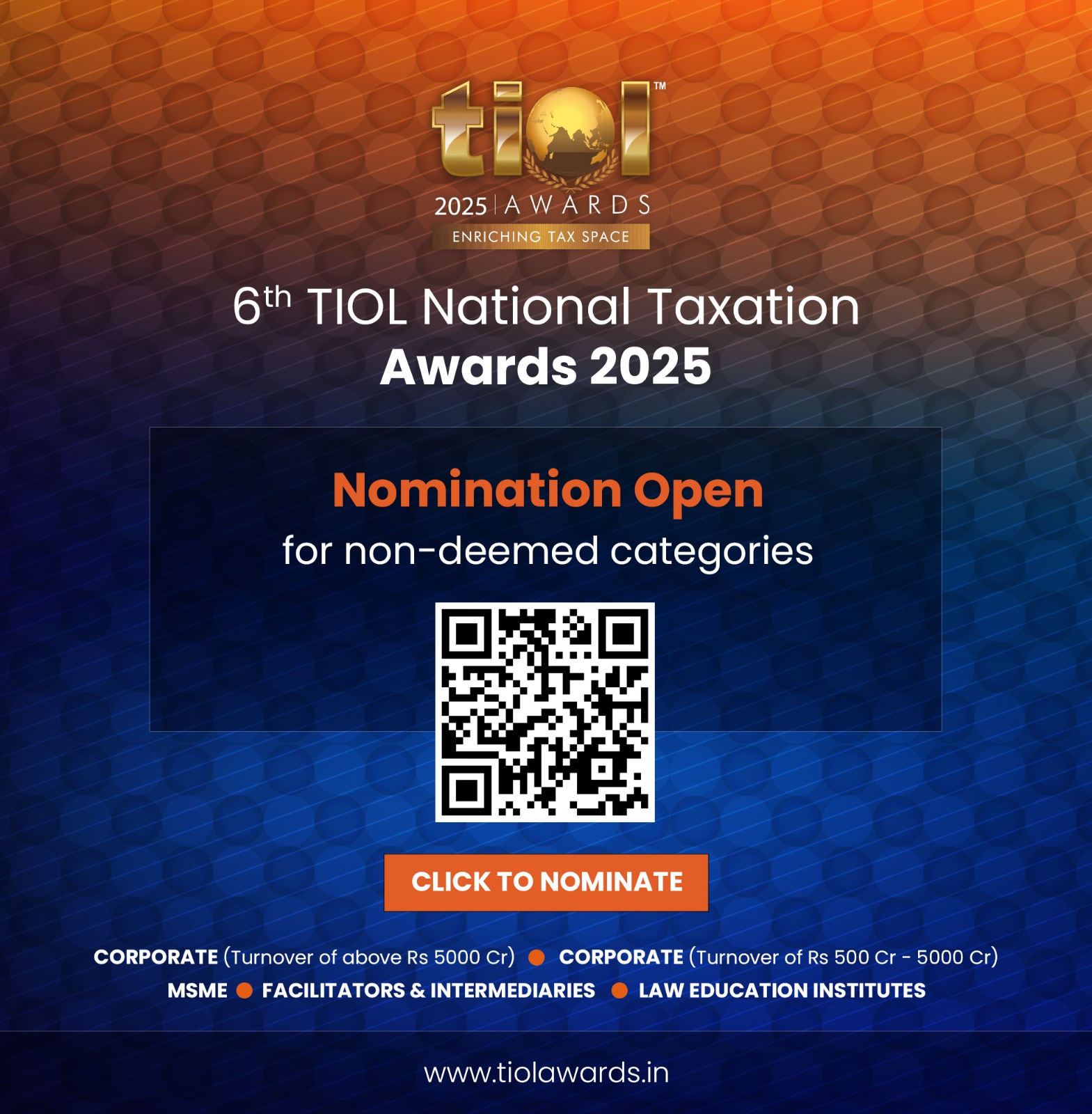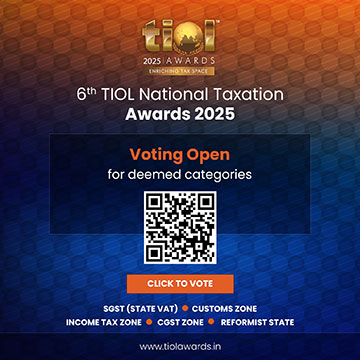Ease or Dis-Ease of Doing Business in India?
MARCH 01, 2016
By P R Chandrasekharan, Member (Retd.) CESTAT
 AS per a World Bank study for the year 2015, India ranked 130 among 189 nations in ease of doing business and 157 in paying taxes. It has been a declared policy objective of the Modi Government to change this situation and make India more investor and business friendly. The Hon'ble Finance Minister in para 162 of his latest budget speech says as follows:-
AS per a World Bank study for the year 2015, India ranked 130 among 189 nations in ease of doing business and 157 in paying taxes. It has been a declared policy objective of the Modi Government to change this situation and make India more investor and business friendly. The Hon'ble Finance Minister in para 162 of his latest budget speech says as follows:-
"162. Litigation is a scourge for a tax friendly regime and creates an environment of distrust in addition to increasing the compliance cost of the tax payers and administrative cost for the Government. There are about 3 lakh tax cases pending with the 1st Appellate Authority with disputed amount being 5.5 lakh crores. In order to reduce this number, I propose a new Dispute Resolution Scheme (DRS)."
However, some of the measures proposed in the Budget,2016, relating to indirect taxes have the effect of doing business in India more uncertain and consequently, more difficult. They are going to increase litigation and increase the compliance cost for the taxpayer and administrative cost for the Government as discussed below.
2. Vide clauses 117, 140 and 149 of the Finance Bill, 2016, Sections 28 of the Customs Act , 1962, 11A of the Central Excise Act, 1944 and 73 of Finance Act, 1994 are proposed to be amended to increase the time limit from the existing one year to two years,for issue of demand notices for recovery of duties/taxes not levied or not paid, short-levied or short paid, or erroneously refunded for any reason, other than the reason of fraud or collusion or any willful misstatement or suppression of facts or contravention of any of the provisions of the Act or of the rules made there under with intent to evade payment of duty/tax. Such time limits are prescribed in tax laws to ensure stability in tax regime and to minimize or put an end to litigation. A few years ago, such time limit was fixed at six months which was later on enhanced to one year. Now the time limit has been further enhanced to two years. No one seems to have paid any serious attention, whatsoever, to the implications of this proposal.
3. First, in the existing as well as previous regimes, the time limits were the same for the tax payer to file refund claims for taxesexcess/wrongly paid and the tax collector to recover taxes short-paid or non-paid. Now the rules of the game are proposed to be changed in favour of the tax collector. There is no proposal whatsoever to increase the time limit for filing of refund claims to two years for the taxpayer. Is this a fair deal for the tax payer? Certainly not. Instead of making the tax regime taxpayer friendly, it is being made more adversarial. One rule for the mighty tax department and another for the hapless tax payer ?
4. Second, by increasing the time limit, are we reducing or increasing litigation? To any rational, thinking person, increase in time limits for demand of taxes short-paid would only lead to more tax-demand notices. The time limit has been proposed to be increased in cases where the taxpayer has no intention to evade tax and he is under a bona fide belief that he has discharged his tax liability in accordance with law. In the case of indirect taxes, since the taxpayer usually passes on the tax burden to his customer, he would not be collecting the tax from his customers in such cases. Therefore, when a tax demand is made from the taxpayer, say after one or two years, the burden/incidence of tax falls on him which he cannot pass on and the nature of the tax itself undergoes a change from that of an indirect to a direct one. The burden would be much more if one takes into account the interest liability on delayed payment of tax and penal liabilities that might accrue in such cases. This would certainly increase the compliance cost and adversely affect the ease of doing business. Thus on the one hand, while the Government proclaims reduction in tax litigation, the effect is just the opposite in reality.
5. Third, the extension of time limit for re-opening of completed tax assessments is certainly going to contribute to the lethargy and inefficiency in the tax department. The time limit starts after the taxpayer has filed his tax returns and all the information needed to complete the tax assessment is placed before the department. If the time limit for completion of tax assessment is enhanced, where is the pressure on the tax officials to perform efficiently?The comments/observations of the Tax Administration Reform Commission in its First Report, [Chapter V at p.243] in this regard is quite relevant.
"Most tax legislations permit revenue authorities to re-open assessments or subject assessments to revision in prescribed circumstances. The rationale underlying the existence of these powers with the tax department is to empower revenue authorities to protect revenue interest and take corrective action where taxpayers manage to defraud the tax department at the time of the original assessment. However, more often than not, the powers of reassessment or revision of assessment are exercised as a tool to undo inaction or incorrect action taken by the AO at the time of the original assessment. Not enough accountability currently exists in the present structure to ensure that the pre-conditions provided in tax legislation for invoking such actions are fulfilled before they exercise their powers. Thus, there is little accountability on the part of the AO who commits the error; instead, the effect tends to get passed on to the taxpayer, who has to undergo reassessment by another officer."
6. Thus the proposal in the current Finance Bill for extending the time limit for re-opening of tax assessments is quite ill-conceived and has the potential of increasing tax litigation, uncertainty in the tax regime and inefficiency in the tax department. The sooner the Government re-considers and withdraws this proposal, the better it would be for a fair and reasonable tax administration.
|
(DISCLAIMER : The views expressed are strictly of the author and Taxindiaonline.com doesn't necessarily subscribe to the same. Taxindiaonline.com Pvt. Ltd. is not responsible or liable for any loss or damage caused to anyone due to any interpretation, error, omission in the articles being hosted on the sites)
|









 AS per a World Bank study for the year 2015, India ranked 130 among 189 nations in ease of doing business and 157 in paying taxes. It has been a declared policy objective of the Modi Government to change this situation and make India more investor and business friendly. The Hon'ble Finance Minister in para 162 of his latest budget speech says as follows:-
AS per a World Bank study for the year 2015, India ranked 130 among 189 nations in ease of doing business and 157 in paying taxes. It has been a declared policy objective of the Modi Government to change this situation and make India more investor and business friendly. The Hon'ble Finance Minister in para 162 of his latest budget speech says as follows:-





